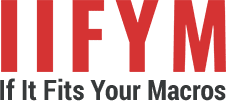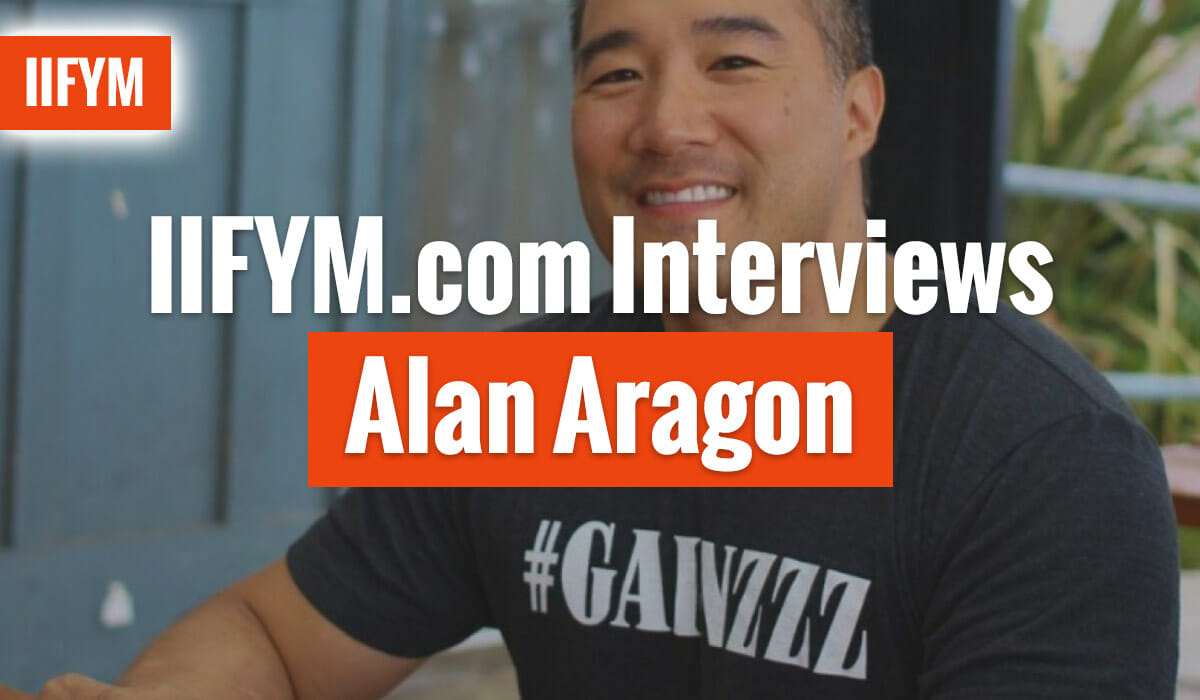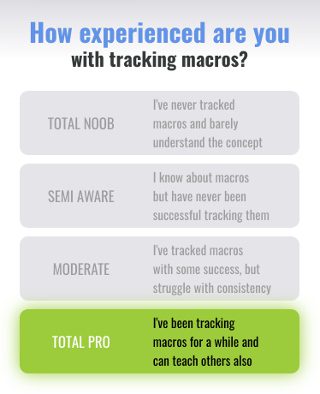For those of our readers that might not be familiar with who Alan Aragon is, can you please tell us a little bit about yourself? Your credentials?
I’m a part-time researcher, part-time lecturer, part-time writer, and full-time bro. I stay busiest as the founder & executive editor of my research review (AARR). My formal education is in nutritional science.
I’ve published both primary and secondary research in the peer-reviewed literature, in the areas of sports nutrition and bodybuilding. I co-authored the most viewed article in the history of the Journal of the International Society of Sports Nutrition. Notable clients, I’ve worked with include Stone Cold Steve Austin and Derek Fisher.
Being one of the top nutrition guys in the industry, do you get a lot of requests for personal coaching and diet plans?
Yes, I do. Unfortunately, I haven’t been able to take on any new clients for about 3 years because I’m slammed with current projects I’m struggling to keep up with.
What do you feel are some of the strong points of the IIFYM diet plan?
The main strength of IIFYM is that it doesn’t promote a narrow set of magical foods that dodge your fat cells (which of course they incinerate) and go straight to the muscle. Of course, this magic list of foods would be great – if it were true. But of course, that’s all an epic load of bullshit.
With a high degree of flexibility in terms of food choices and meal setups, IIFYM can be individualized in order to maximize adherence to the plan. And ultimately, adherence is the make-or-break factor in any diet. I like how IIFYM is rooted in science rather than imagination & speculation.
Where do you think IIFYM can make some improvements?
Not much can be done about the actual acronym (IIFYM), but it’s quite polarizing, and many people get the wrong idea. It’s catchy, but it can also be misleading. Plenty of folks don’t know that it originated as a short-handed way to tell forum members that it’s okay to have the foods they want while cutting, even if they weren’t the stereotypical contest prep foods like skinless chicken breast, broccoli, and sweet potatoes.
People, in general, have this tendency to believe that there are “bad” foods that must be avoided completely in order to reach physique goals, which as we know is utterly false. However, a recurrent problem with the IIFYM moniker is that some people mistake it as a green light to dominate their intake with junk. This is obviously a bad idea from the standpoint of long-term health.
Another potential problem I see in IIFYM circles is the nurturing of an obsessive need to micromanage your nutrient intake down to the last gram, app, and scale in hand at all times. While this is fine for some, it’s just unnecessary (and burdensome) for many.
People should know that it’s best to individualize the degree of meticulousness with which you track your intake. For those who actually enjoy being meticulous, great – track things as closely as you want. Knock yourself out.
However, looser approaches (down to not tracking at all, but simply being consistent with what works for the goal of maintenance) and more qualitative/less quantitative approaches to diet are just as legit, and with many folks, just as effective especially in the long-term.
A caveat I’d throw in here is that unless you spend a certain amount of time being meticulous with measuring & tracking (at least 1-2 weeks for most), you won’t ever have a realistic sense of how to eyeball things.
However, looser approaches (down to not tracking at all, but simply being consistent with what works for the goal of maintenance) and more qualitative/less quantitative approaches to diet are just as legit, and with many folks, just as effective especially in the long-term. A caveat I’d throw in here is that unless you spend a certain amount of time being meticulous with measuring & tracking (at least 1-2 weeks for most), you won’t ever have a realistic sense of how to eyeball things.
What are your thoughts on refeeds vs. cheat meals with the IIFYM diet plan?
Refeeds can be helpful in situations of prolonged dieting, especially in carb-restricted conditions. Refeeds are typically more extensive than simple, non-linear carbohydrate intake through the week. I don’t subscribe to any significant or lasting hormonal normalization occurring from refeeds. Their ability to sustain dietary adherence and prevent major drops in training performance are the most concrete merits they have.
They’re not necessary or beneficial for all dieting scenarios though, especially ones where carb reduction is not severe. As for cheat meals, these haphazard “fuck it all” meals (or entire days) are a common crutch for people spending most of the week enduring a diet that tastes like cardboard and ass.
If you eat the foods you really like every day, and you allow regular consumption of indulgences (fit them in!) if that’s your thing, this eliminates the need for “cheat” meals in order to balance out your brutally tasteless diet.
What about diet breaks? Most diet plans or fast weight loss programs don’t consider them diet breaks seem to be something that more people are talking about lately. What are your thoughts?
I first heard the concept of diet breaks discussed by Dan Duchaine in the mid-90’s. The guy who really effectively brought the concept to the public was Lyle McDonald, who has a nice, detailed chapter on diet breaks in his highly underrated book, A Guide to Flexible Dieting. My take on the diet break (1-2 weeks off of the formal plan) should occur every 1-2 months. Yes, there’s a good bit of variation built into that guideline, as it should be.
Diet breaks ideally should be done on an autoregulated basis. In my view, a diet break’s main purpose is to give the dieter a psychological break, if needed. Spending some time in a period where prior maintenance calories are resumed while significantly loosening up on, or completely abandoning the structure of the formal diet can actually help long-term weight loss progress.
In contest prep scenarios, a more careful & conservative approach to diet breaks should be employed.
Let’s talk about macros now.
What are your thoughts on protein consumption?
The set range of our Macro Calculator is at .8-1.2 gram of protein per lb of desired body weight, which I feel may be a little on the high side for most people just following a regular diet plan but safe for most athletes. Many people subscribe to 1 gram per lb of body weight, while in this Dr. Joe Interview he sets protein consumption closer to .75 grams per lbs of lean mass.
What is your take on setting protein for athletes and bodybuilders?
Protein is pretty simple, I think people make it way more complicated than it needs to be. I ballpark protein targets right around 1 g per pound of LBM. Adjust up if you want, but don’t do it to the extent that you impinge upon carbs & fat. An alternate way I set protein is on target body weight, which is a proxy for lean body mass with a little extra margin of surplus.
A systematic review by my colleague Eric Helms concluded that 2.3-3.1 g/kg (1-1.4 g /lb) of LBM is optimal for lean resistance-trained athletes in hypocaloric conditions. These findings reflect what I’ve seen work well in the field.
What about carbs on the IIFYM diet plan?
A lot of contest prep coaches from the old school seem to subscribe to the idea that carbs are the devil and should be dropped to drastic levels right off the bat, while some of the newer contest prep coaches seem to keep carbs high as possible. Our own IIFYM Calculator starts people off pretty high on purpose. Obviously every person has different needs with their custom diet plan, but in general, are you a fan of higher or lower carbs? Why?
Ironically, contest prep in the 80’s & 90’s was all about the high-carb/low fat. A subset of coaches, most prominently the 3DMJ guys and other coaches with a scientific bent are doing the sensible thing and maximizing carb intake (while still achieving fat loss progress), so it seems what’s old is new again.
Sure there are folks who buy into the magic of severe carb restriction, but the reality of the matter is that most competitors – especially natural ones – will flatten out and have crap for training energy. And, they won’t necessarily lose fat at a greater rate, so it’s lose-lose.
For the majority. I’m not saying people who do great on keto don’t exist, but my feeling is that they’re surviving it rather than optimizing their programs. Also, there’s no fat loss magic to low-carb/keto diets. The magic is seen in the research thus far has been due to higher protein intakes, not lower carb intakes
Let’s talk about reverse dieting and metabolic damage. There are many contest prep coaches that swear by it and many naysayers that hate the concept. What are your thoughts on the reverse dieting diet plan?
Reverse dieting is mainly beneficial for psychologically cock-blocking a post-contest binge. Any post-contest game plan is better than no post-contest game plan, and a certain degree of structure and graduated exit from the deficit can be a good thing.
However, the sooner you get out of the deficit and into maintenance calories, the better. The sooner you get out of what essentially is a semi-starvation state (and all of the hormonal /physiological and functional impairments that accompany it), the better. In my opinion, that means 2 weeks max to get back into full pre-dieting maintenance intake.
If you plan on shifting towards a surplus, take another 2 weeks max to graduate into that. And don’t get too emotionally attached to your beloved glute striations to the point that your feelings are hurt when you smooth out and return back to being a normal, healthy human being.
As for the metabolic damage thing, I think as a concept it can get blown out of proportion, despite a drop in metabolic rate from dieting being a real phenomenon. I wrote a lengthy article on reverse dieting in the Feb/March 2014 issue of AARR, if anyone wants to dig deeper into the topic.
Tell us about your approach to cardio. HIIT, LISS, both or none? Also, How often?
AA: For the specific goal of body fat reduction, while maximizing lean mass retention, the objective should be to do the least amount of cardio necessary to get the job done. It’s entirely possible to have a cardio-free program and make stunning progress, I’ve seen it many times. People tend to believe that a certain minimum amount of cardio should be done by everyone when that’s simply not the case.
Individuals vary widely in the amount of non-exercise activity they do outside of the gym, so prescribing X days/minutes of formal cardio on top of the pre-existent training protocol simply cannot be universalized.
People tend to believe that a certain minimum amount of cardio should be done by everyone when that’s simply not the case. Individuals vary widely in the amount of non-exercise activity they do outside of the gym, so prescribing X days/minutes of formal cardio on top of the pre-existent training protocol simply cannot be universalized.
The type of cardio (HIIT vs LISS) should be determined by the personal preference & tolerance of the individual. Whether someone does hour-long moonlit walks, 30-minute jogs, or 10-minute Tabata-esque drills (or any combination or rotation of those) should be left to the preference of the trainee because they all can be effective. Several factors can determine the choice of cardio type.
Schedule restraints, volume/exhaustiveness of the resistance training program, orthopedic limitations, and other clinical limitations can all influence which mode is chosen. For example, if someone is short on time and patience but has sufficient tolerance or conditioning, then they might go with higher-intensity/shorter-duration cardio.
Conversely, if someone has cardiac or orthopedic limitations (or injuries), and they have a lot of time to kill. Then they might opt for some lower-intensity/longer-duration cardio. Both types will work similarly, and going with personal preference will result in better adherence to the program.
There’s nothing “magic” about any particular type. Research comparing types of cardio typically show the superiority of high-intensity interval training (HIIT), but almost invariably, this comparison is not done under conditions where a progressive resistance training program is also in place.
This limits the relevance of the positive HIIT findings to programs that are cardio-only. So, to sum up, go with what you personally prefer, but do the least amount necessary to keep progress humming along; you can always raise the volume and/or intensity incrementally as needed.

Here is a question about food choices. I know you are a fan of keeping your diet plan 80/20 but many people seem to have their own interpretation of what they 80 should be and what the 20 should be. Can you please let our readers know your precise thoughts on food choices for a weight loss diet plan?
As a general rule, the less refined & removed from its original state, the’healthier’ the food. But again, this is a very general rule. There are plenty of forms of processing (including cooking) that can actually increase the nutritional bioavailability of a food.
A perfect example of a highly processed food with a high nutrient yield, not to mention a wide range of health benefits, is protein powder (whey in particular). It’s almost a lost cause to try to draw hard lines on which foods meet the 80 versus the 20 categories. In terms of diet quality, it’s mostly influenced by carb & fat sources.
Practically speaking, do your best to dominate your carb choices with whole and minimally refined foods, while keeping the low-fiber/refined flour foods and added sugars to a minimum. Keep your fat intake dominated with intrinsic fats (pre-existent within whole foods) rather than added fats. Of course, there are exceptions such as olive oil, but that’s the general rule.
Foods on their own cannot be good or bad. What matters is their relative contribution to the diet. If you dominate your diet with crap, then you have a crappy diet. This was never the intention of IIFYM. Diet quality matters, and it always has. However, a healthy diet can indeed contain the crap, but obviously, it must comprise the minority of intake in order to preserve the overall quality of the diet.
If you had to come up with a definition for the term “clean food” or “clean eating”, as it relates you’re your approach to diet plans, what exactly would your definition be?
I always jump at the opportunity to credit hydrogenated vegetable oil for being the cleanest possible food, because it was originally developed for the purpose of making soap :). On a more serious note, the “clean” label is very misleading when applied to individual foods.
To reiterate what I said earlier, a food cannot be judged in isolation from the rest of the diet. My favorite example is how most people would call celery a “clean” or healthy food, and ice cream a “dirty” or unhealthy food. In the hypothetical scenario where you can choose only one of those foods to survive on, guess which one would sustain your health (and ultimately your life) longer? If you choose celery, you’ll sooner die from
If you choose celery, you’ll sooner die from a nutrient deficiency-related disease. The point is, labeling foods as clean or dirty ignores context, and ignoring context is a common mistake people make when casting hasty judgments.
It should be obvious that the diet should consist mostly of whole & minimally refined foods. But still, it’s not all that simple, since foods can be significantly altered from their original state or source, but still, have positive impacts on health. People harp on and on about processed food being unclean, yet they’ll happily drink pink alien piss during their workouts. 🙂
What about diet supplements do find worthy of your approval?
I don’t believe in universal supplement prescription since individuals vary widely in their dietary habits and nutrient intake profiles. However, I’m a proponent of taking a multi. I personally don’t get extravagant with it, I just take the Kirkland Signature brand. It’s USP Verified, so I can trust the potency, purity, and label accuracy.
I stack Citadel Nutrition’s Athlete vitamin on top of that because it covers all the nutrients my regular multi & most multis come up short on (magnesium, calcium, zinc, vitamin D). It’s also 3rd Party Verified, as are all of their products, so that gives me peace of mind. Creatine is pretty well-known as the most solidly supported supplement for increasing strength, power, and mass.
Beta-alanine has a decent body of evidence supporting its role a little further towards the strength-endurance side of the continuum. Caffeine is another agent with a good evidence basis for a range of ergogenic purposes.
Those are the ones that stand out, the rest range from dangerous, useless, iffy, to worth a try. There’s a great discussion of supplementation in a recent review that I co-authored with Eric Helms and Peter Fitschen. Fish oil is another supplement worth looking into if your dietary intake of omega-3 fatty acids is low to negligible.
I’d like to talk about your professional blog AARR – (Alan Aragon Research Review)
At only $10 per month to subscribe, I think you are leaving a lot of money on the table, given the quality and quantity of information you provide to your readers.
I wasn’t expecting the opportunity to plug my research review this explicitly, but hey, I’ll take the mic if you’re handing it to me. :)… In a nutshell, AARR is the culmination of everything I’ve studied, practiced, and observed in clientele. In addition to reviewing the theoretical and practical implications of the latest published research.
I started it in 2008, and at least 5 other research reviews have emulated it, but my personal bias tells me mine is still the best of its kind. I don’t wanna ramble on too much about it since I honestly feel that AARR sells itself, and I’ve worked extremely hard to make sure it has a reputation for being awesome.
Do you count your macros?
I’ve been at this long enough to know the macro values of everything I love to eat, so I just lock into my routine and don’t bother with the small stuff. I know my targets and stay in the ballpark. IMO, life is way too long to be counting macro grams, unless you’ve got a lot at stake, such as a competition.
What is your favorite cheat meal or diet plan refeed food?
Hah, I like to overeat sushi & sashimi. :)…
Who do you look up to in the nutrition industry?
AA: There are plenty of people in the industry I look up to, and unfortunately, I know that I’ll miss some if I try to post the whole list. I’ll make this quick and say that my 2 biggest influences are Brad Schoenfeld and Lyle McDonald.
How important is meal timing compared to calories and macros?
There’s a continuum of importance that goes from negligible to crucial, depending on the goal & the sport, and also the nutrient or compound in question. See below;
Unnecessary & redundant if you’re already consuming a diet with an optimal amount of total daily protein.
Who would win in a fight, you or Lyle?
I would let Lyle win to avoid him eternally trolling me on Facebook.
Are you jealous of Steve Kleva’s quads?
Of course. Who isn’t?
What part of Chris Lavado do you find most impressive? Serious..
I think Chris’ most impressive quality is his ability to calmly shake them, haters, off. You know, just brush ‘em off like dandruff on your traps, haha. :p
That plus his eyebrows. Those things are like 70’s bush.



